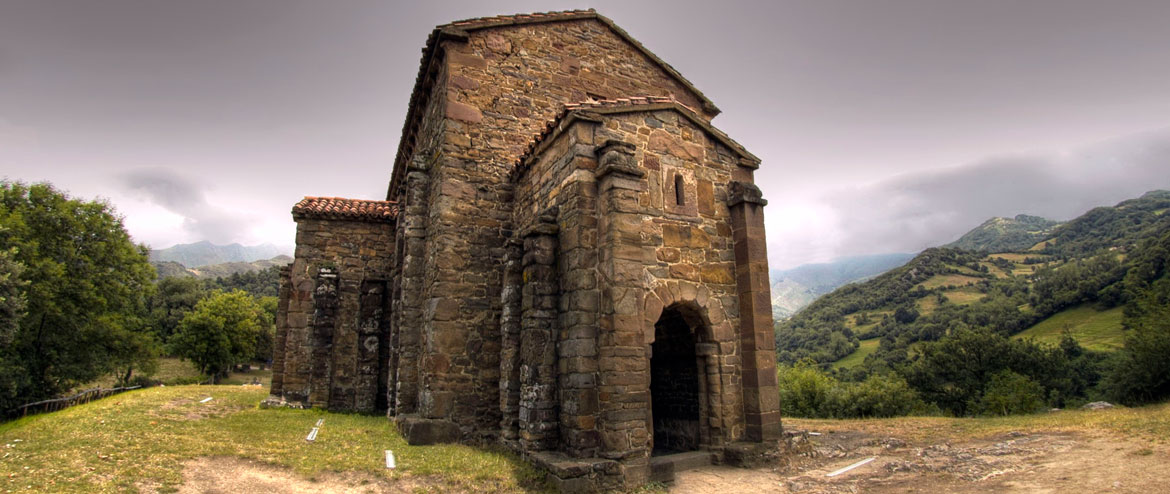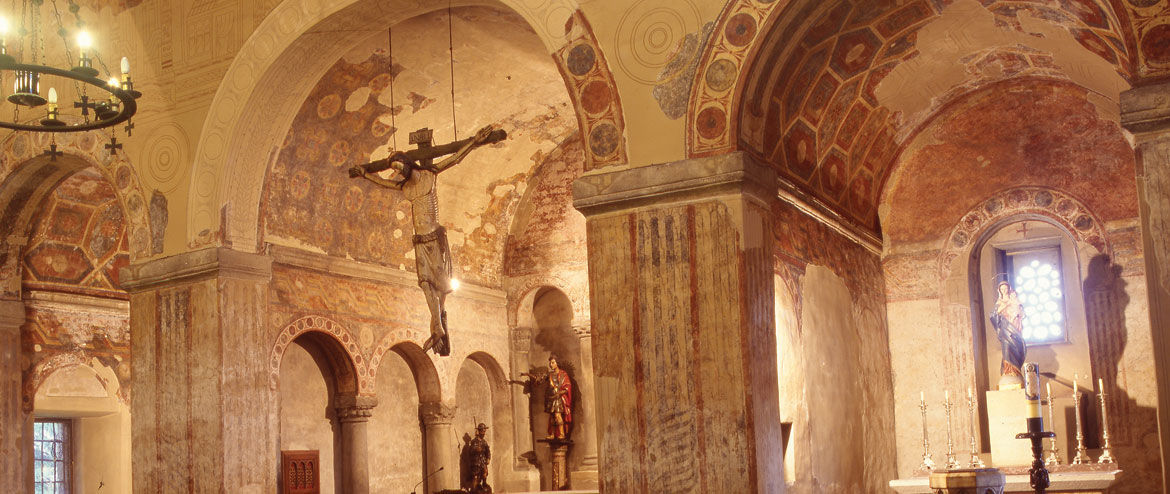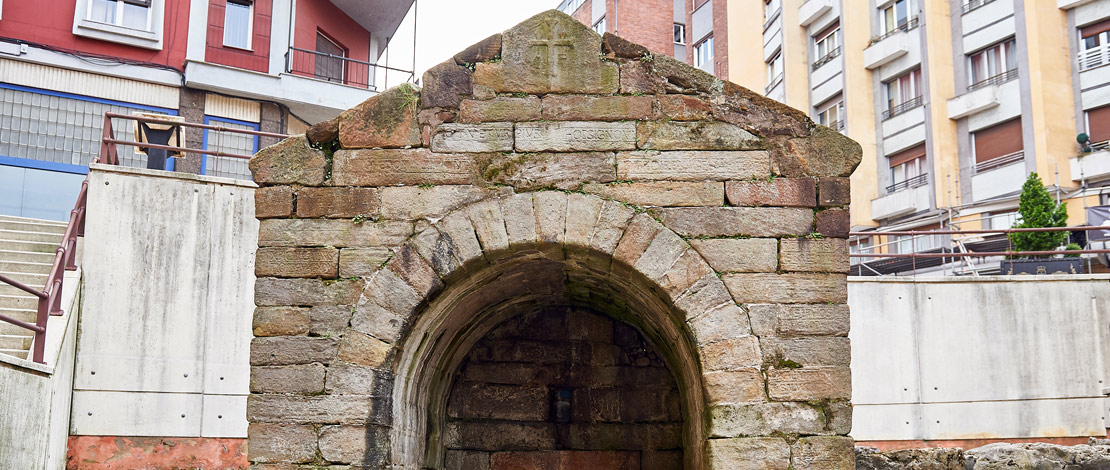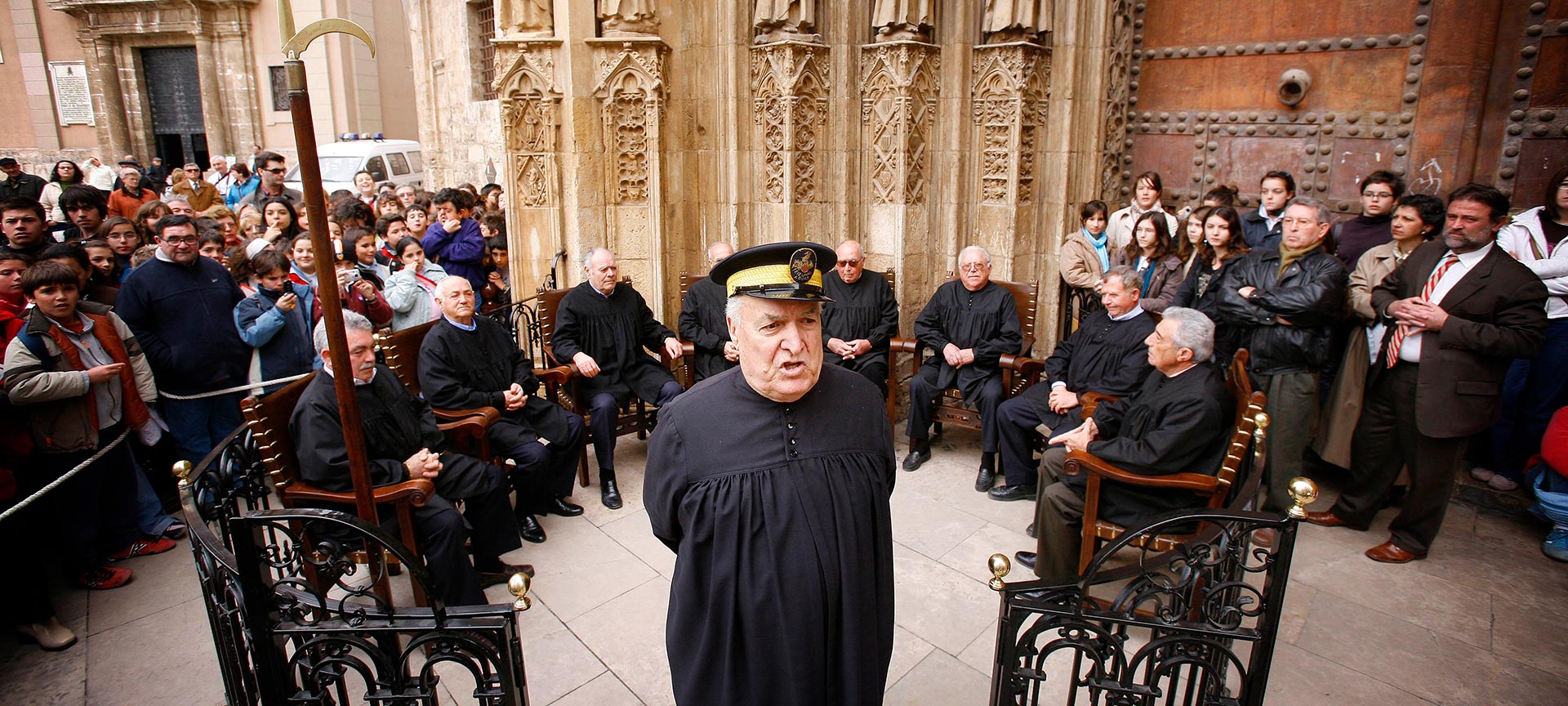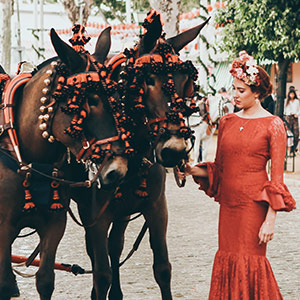
There are examples of Asturian Pre-Romanesque art all over the Principality of Asturias. This architectural style, also called Asturian architecture, first appears in the 8th century at the beginning of the Kingdom of Asturias, and is one of the region’s most distinguishing artistic features. This unique style is found only in the Principality of Asturias and is closely linked to the first Christian kingdom of the Iberian Peninsula after the Islamic conquest. We’re going to discuss six of the finest works of Asturian Pre-Romanesque architecture that make up the UNESCO World Heritage Site “Monuments of Oviedo and the Kingdom of the Asturias”.
Debe activar Javascript para poder utilizar este servicio
-

Santa María del Naranco
Monte Naranco in Oviedo is home to the most significant Pre-Romanesque building in the Principality of Asturias. This church is four kilometres from the provincial capital, and was originally intended to be a palace for King Ramiro I, although in principle it was to be the Aula Regia—a throne room used for ceremonial receptions. Santa María del Naranco was finished in 842, and has a rectangular floor plan on two storeys, with a crypt on the ground floor. The upper floor is a single room, reached via a beautiful double exterior stairway. This structure and the sweeping views of Oviedo from the hilltop make Santa María del Naranco an essential element of any tour of the Asturian Pre-Romanesque, and a wonderful place to take photographs.
-

San Miguel de Lillo
Around the year 842, King Ramiro I ordered another structure to be built very close to Santa María del Naranco: the church of San Miguel de Lillo, dedicated to Saint Michael the Archangel. Today, only a third of the original building is still standing, as part of the church collapsed in the late Middle Ages and had to be rebuilt. The interior is divided into three naves, separated by columns on bases decorated with the symbols of the Evangelists and supporting a vaulted ceiling.
-

Santa Cristina de Lena
Just 35 kilometres from Oviedo, on a hill in the valley of the river Lena, the Church of Santa Cristina de Lena is another part of the UNESCO World Heritage Site. Its internal structure is different from the other churches of the Kingdom of Asturias, laid out in the shape of a Greek cross, which is unusual for Asturian architecture. Take a moment to enjoy the spectacular scenery around Santa Cristina de Lena, and if you would like to see some of the beautiful villages nearby, visit Mieres and Las Ubiñas-La Mesa Natural Park, a fabulous Biosphere Reserve just 50 minutes from the capital.
-

San Julián de Los Prados
Practically in the centre of Oviedo, the Basilica of San Julián de Los Prados, also known as Santullano, is considered the oldest and largest extant Asturian Pre-Romanesque structure. It was built during the reign of Alfonso II the Chaste (791-842) and dedicated to Saint Julian and his wife, Saint Basilissa. Inside, on a Latin basilica floor plan of three naves, the pictorial decoration is especially significant for the area covered and the variety of icons from all over western Europe.
-

Cámara Santa Chapel in Oviedo
You will find the Cámara Santa Chapel in Oviedo Cathedral. It was constructed as a Palatine Chapel by an Asturian king, housing the Arca Santa reliquary and the Holy Shroud, and nowadays it has become a symbol of Asturias. Since its construction, it has been a meeting point for pilgrims, worshippers and travellers. Now, thanks to its restoration, you can see the Romanesque carvings of the Apostles, amongst other things.
-
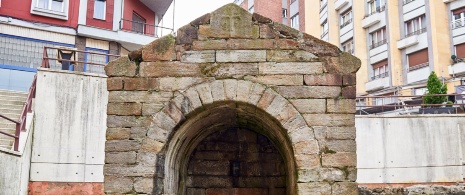
La Foncalada Fountain
La Foncalada Fountain, also located in the city of Oviedo, is a unique example of Pre-Romanesque civil construction. It was built in the 9th century during the reign of Alfonso III “el Magno” (the Great). It protects a natural spring, which is a source of drinking water, which flows into a covered pool. You will see that the Victory Cross with the alpha and omega is carved into its pediment.



